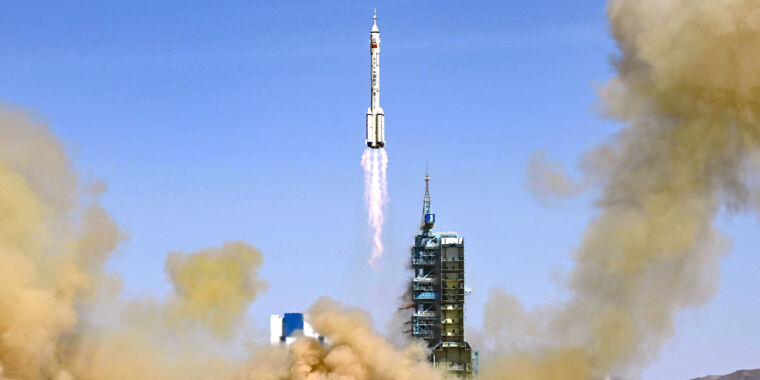
VCG/VCG via Getty Images
Last week one of China’s most reliable rockets, the Long March 2F vehicle, took off from a spaceport in the Gobi Desert carrying a secretive space plane.
In a short report on the launch by China’s state-owned Xinhua news service, the government provided little detail about the “reusable test spacecraft” beyond saying it would remain in orbit for “a period of time” and providing technical verification of reusable and in-orbit services.
This is the second time China launched what is believed to be a small space plane, likely similar in size and scope to the US Space Force’s experimental X-37B vehicle. This uncrewed X-37B resembles NASA’s space shuttle, but at less than 10 meters in length, it is considerably smaller. The vehicle’s cargo bay can hold something about the size of a standard refrigerator.
In a 2017 interview, Chinese space development official Cheng Hongbo said the space plane would be capable of up to 20 flights. China first launched its space plane in September 2020 on a short flight—it landed two days later at a runway in a dry salt lake bed in western China known as Lop Nur.
The current flight launched on August 4 and has now lasted for five days, more than doubling the duration of the initial test flight. A reporter who specializes in the Chinese space program, Andrew Jones, also notes that the space plane is flying in a much more eccentric orbit this time, 346 km by 593 km, inclined at 50 degrees above the equator; compared to 331 km by 347 km, with a similar inclination, in 2020.
So what is it doing up there? Secret, space-y stuff, of course. The reality is that we’re not even sure what the US Space Force is doing with the X-37B, which has made six flights since 2010. The US vehicle likely serves several purposes, including functioning as an in-orbit test bed for developing advanced surveillance sensors, but military officials have never provided a detailed public account of its activities.
The Space Force has two X-37B vehicles, and even their first flights measured more than 200 days. The latest flight, launched in May 2020, has seen the X-37B set new records for duration, with the current mission now in orbit for 813 days and counting. The shorter duration of the Chinese space plane’s first flight may indicate that it has a special role in testing hypersonic technologies or other activities related to a high-velocity atmospheric reentry.
Space Force customarily releases images of its X-37B vehicle after landing, but so far, China has released zero images or videos of its space plane. The only way we knew when it had landed in 2020 was thanks to satellite trackers and Planet Labs satellite imagery of the Lop Nur landing site in China.








